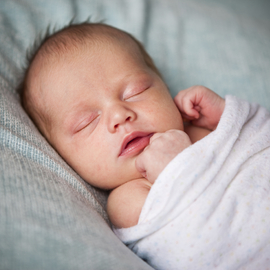 Have you ever wondered why mattresses come with those tags that remind us when we are disposing of them—not to burn them?
Have you ever wondered why mattresses come with those tags that remind us when we are disposing of them—not to burn them?
The tag certifies that a mattress is up to ‘fire code’, meaning that it is covered in toxic flame retardants and other chemicals.
Did you know that conventional pillows are often stuffed with polyester and treated with chemical finishes? the question is -do you really want to press your face into that?
We spend roughly a third of our lives asleep, so it’s a wise idea to make sure our mattress, pillow and linen are not toxic for us.
Mattresses
Conventional mattresses are made of polyurethane foam that disintegrates over time, releasing tiny particles associated with upper respiratory problems.
Ideally we should look for mattresses for our family that are made of natural material, like organic cotton, wool, or some combination of these. Organic mattresses are free of synthetics, including flame retardants and water repellents. Wool, interestingly is a naturally flame resistant material, and meets Consumer Product Safety Commission standards.
You can also find mattresses made of natural latex, which deters dust mites and bacteria and is stain- and water-proof. (Note – latex can be sensitising for people with allergies and can even trigger nut allergies; avoid them if your family has a history of these).
Unfortunately natural fiber and organic mattresses aren’t cheap they range from $1000 to $5000, but they do last a long time—most green manufacturers guarantee at least twenty years.
Babies and Children sleep for longer
If it’s too expensive to replace everyone’s mattress, then consider that newborn baby’s sleep fourteen to sixteen hours a day or even more. Focus on a natural crib mattress—these start at around $250. A twin-size for a child starts at around $500.
Mattress pads
If you’re not ready to splurge on an organic mattress, you can still make a difference to your child’s exposure by placing an organic (and naturally flame-retardant) wool pad on the bed. Wool naturally absorbs moisture, making it a great choice for kids’ beds.
Pillows
Go for natural fills, such as wool, kapok, buckwheat (which prohibits the growth of dust mites) or organic cotton. Feathers can be triggers for asthma and allergies.
Linen
Look for sets made from unbleached, untreated organic cotton or other eco-friendly natural fibres like linen, hemp and bamboo. Sheets, blankets, bedspreads and comforters of any material are likely to carry chemical permanent-press, stain-repellent finishes. Organic and natural fabric sheets come in a range of colours and patterns made from nontoxic dyes.
If you do decide to stick with conventional bedding, wash new sheets before putting them on your bed to rinse away manufacturing residues.
Here are a few links for great websites that sell healthy sleep options…
www.tetrateatree.com.au
www.nestorganics.com
www.organature.com
Happy sleeping!
. . . . .
 Yours in Health,
Yours in Health,
Jennifer Barham-Floreani
(Bach. Chiropractic, Bach. App Clinical Science
Registered internationally, no longer practicing as a chiropractor in Australia.)
. . . . .
References
-
Dr Peter Dingle – The Deal for Happier, Healthier, Smarter Kids – A Twenty-first Century Survival Guide for Parents @nd Edition pgs 71- 101


 Have you ever wondered why mattresses come with those tags that remind us when we are disposing of them—not to burn them?
Have you ever wondered why mattresses come with those tags that remind us when we are disposing of them—not to burn them?
